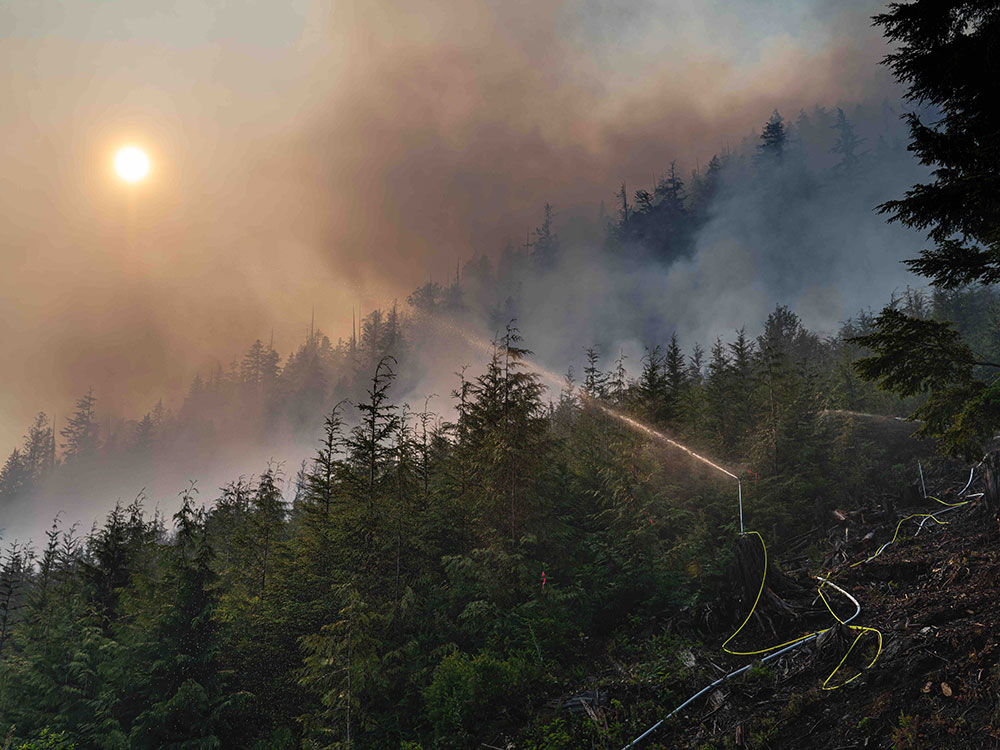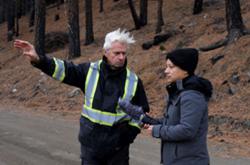As B.C. heads into what is predicted to be a hot summer, the need to build wildfire resiliency is a top priority across the province. Last week’s FireSmart Wildfire Resiliency and Training Summit in Prince George brought together representatives from municipal governments, fire departments and other stakeholders to discuss insights from last year and what communities can do to recover, rebuild and repair.
Lucy Grainger, FireSmart BC’s education officer, was glad to see a broad range of representatives at the summit — including fire chiefs and members from Indigenous emergency service groups that don’t often get to be in the same room at the same time.
“It’s been pretty siloed for a long time,” she said. “With increasing fire seasons and with more and more interface fires where the forest is directly impacting communities, there is way more need for all these folks to work together.”
Wildfires have become a collective responsibility, Grainger said, and they now require more interagency co-operation than ever before. Last year’s wildfire season was the most destructive in B.C.’s recorded history, resulting in more than 2.84 million hectares of forest and land burned. For 28 days, B.C. was in a provincial state of emergency. In Kelowna 189 homes were destroyed, and across the province, roughly 185,000 people were affected by evacuation orders or alerts.
Expanding the reach of wildfire resiliency training
The annual Wildfire Resiliency and Training Summit, which is now in its fourth year, is an opportunity to connect people working throughout the region.
“To have a summit that brings 700 people together across the province, that has a common goal and understands that we all have different roles to contribute to making our province more wildfire resilient in the future, was leaps and bounds above anything we probably had envisioned back in 2017,” said Gord Pratt, senior manager at Forest Enhancement Society of BC.
Tanya Spooner, manager of emergency programs for the City of Prince George, said the location afforded more remote communities the chance to take part.
“It gave an opportunity to several of the smaller departments in the north to attend,” she said. “You normally need to send your actual equipment as well as individuals, so it’s difficult to free up that equipment and people to do that.”
The event also helped to expand the reach of FireSmart BC’s work. The organization is aimed at developing wildfire resiliency by connecting and providing information to individuals, local governments, First Nations and fire departments. Online resources such as FireSmart’s Begins at Home Guide and the Landscaping Hub are valuable guides for individuals to help them make their homes and properties less combustible in the event of wildfire.
Applying FireSmart principles, says Spooner, is “one of the best ways that people can actively participate in mitigating the impacts of wildfire.”
Last year’s fires, she says, were a reminder that homes that have non-combustible roofs fare better than those that do not have those wildfire resiliency measures in place.
While not everyone can afford to install a new roof right away, making this information available helps people plan for when they might be able to afford one, said Grainger. Until then, small things like removing combustible materials from the perimeters of buildings, choosing landscaping materials wisely and opting for fire-resistant plants can make a big difference.
Alongside large fuel mitigation projects happening at the municipal scale in Prince George, free FireSmart assessments are now available to people living in the community, where FireSmart co-ordinators can do property walk-throughs to identify what an individual can do to make their home and its surroundings more resilient to wildfire damage. FireSmart assessments are available in many communities across the province.
“There’s very little that we can do to stop wildfires from coming in their entirety. Because we can’t control Mother Nature, we can’t control thunder and lightning,” Spooner said.
“But we can do things to make our own homes and our own communities more resilient.” ![]()
Read more: Environment

















Tyee Commenting Guidelines
Comments that violate guidelines risk being deleted, and violations may result in a temporary or permanent user ban. Maintain the spirit of good conversation to stay in the discussion and be patient with moderators. Comments are reviewed regularly but not in real time.
Do:
Do not: